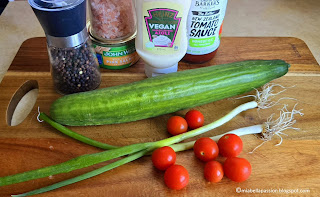Spider plants, scientifically known as Chlorophytum comosum, have become a worldwide favourite among plant enthusiasts.
Spider plants are a beautiful and versatile pot plant addition to any indoor space. With their rich history and reasonably easy-care requirements, they make the perfect plant for both beginner and experienced gardeners alike.
They are a popular indoor plant due to their air-purifying qualities, and unique appearance, with thin sword-like leaves having a centre cream white stripe.
My mother had a spider pot plant growing when I was a child, and I remember being fascinated by the 'babies' the plant prolifically produced.
I have mine at the 'Town House' in a large white pot on a display cabinet in my kitchen.
It's a perfect position, as it has the height for the spider plantlets to hang down, there's no draft and it is in bright light.
History of Spider Plants:
In their natural habitat, these plants are truly a sight to behold.
Spider plants are native to the tropical and subtropical regions of Africa, specifically found in South Africa and Madagascar. In the wild, these plants can be seen growing in the lush forest floors and hanging from tree branches.
One of the most fascinating aspects of spider plants in their natural habitat is their ability to reproduce. These plants produce tiny white flowers that eventually develop into small plantlets, which can be seen hanging from the mother plant like spiders on a web, hence the name "spider plant."
Another interesting characteristic of spider plants is their adaptability to their surroundings. They can thrive in bright and low light conditions, making them a versatile plant growing in the wild, and in homes.
Caring for Spider Plants:
Spider plants are relatively easy to care for and can thrive in a variety of environments. Here are some tips for keeping your spider plant healthy:
· Light: Spider plants prefer bright, indirect light. Avoid placing them in direct sunlight as this can scorch their leaves.
· Watering: Water your spider plant when the top inch of soil feels dry to touch. Be sure not to overwater, as this can lead to root rot.
· Temperature and Humidity: Spider plants prefer moderate temperatures and high humidity. Avoid placing them near drafts or heating vents.
· Fertilizing: During the growing season, fertilize your spider plant with a balanced liquid fertilizer every two weeks.
Propagation:
Simply cut off the offshoot plantlets once they have developed roots then plant them in a separate pot with well-draining soil.
Place the new plant in indirect light and water it regularly to encourage healthy growth.
Pests and Diseases
Like any plant, Spider Plants are susceptible to pests and diseases that can affect their health and appearance.
Monitoring your spider plant for pests and diseases, whilst addressing any issues causing brown tips on the leaves, means you can help your plant thrive and maintain its beauty.
Common pests that can infest spider plants include spider mites, aphids, and mealybugs. Spider mites are tiny arachnids that suck sap from the leaves, causing yellowing and stippling. Aphids are small insects that feed on the plant sap, while mealybugs look like white cottony masses on the leaves.
Spider plants can also be affected by diseases such as leaf spot, root rot, and powdery mildew. Leaf spot is characterized by dark spots on the leaves, while root rot is caused by overwatering and can lead to wilting and yellowing of the leaves. Powdery mildew appears as a white powdery substance on the leaves.
Causes of Brown Tips:
Brown tips on spider plant leaves can be caused by various factors, including overwatering, underwatering, low humidity, exposure to cold drafts, or too much direct sunlight. It's important to ensure the plant is watered evenly, placed in a suitable location, and kept away from extreme temperatures.
Growing Outside:
Spider plants can be grown in the garden. In fact, they thrive in part shade areas, or under trees with filtered light. They are known once established in suitable conditions to have invasive qualities.
I grew them at the 'Mia Bella Passions Homestead' garden in a retained border bed where they looked fabulous, but also where I had control of their growth and plantlets.
They tolerate temperatures as low as 35 degrees Fahrenheit (1.6 Celcius).
For The Vase:
Spider plants make a wonderful addition to the flower vase. Strings of plantlets hanging down the sides of a large vase.
Or as I have done, several individual plantlets in a small vase with the double freesias.
For the latest posts JOIN :)
#spiderplants #potplants #easytogrowpotplants































